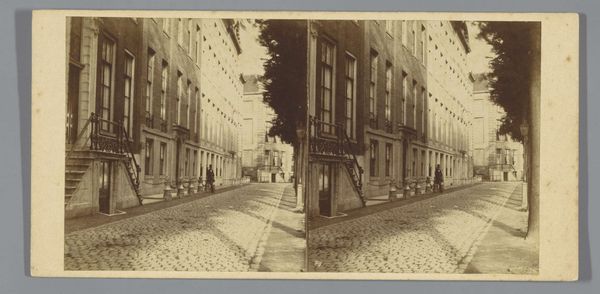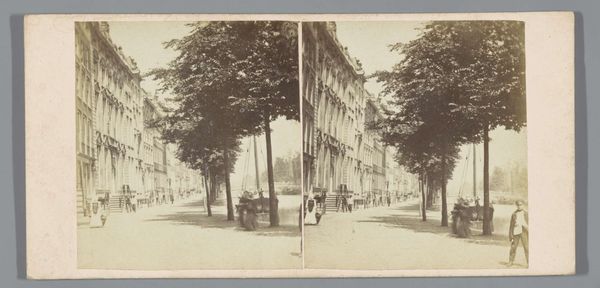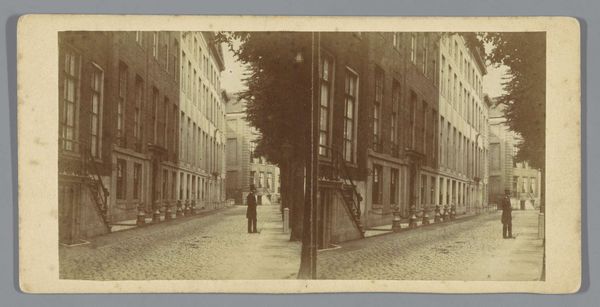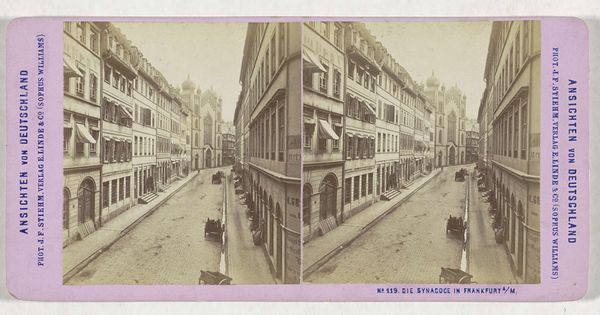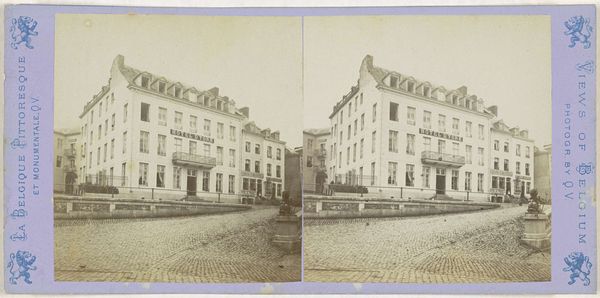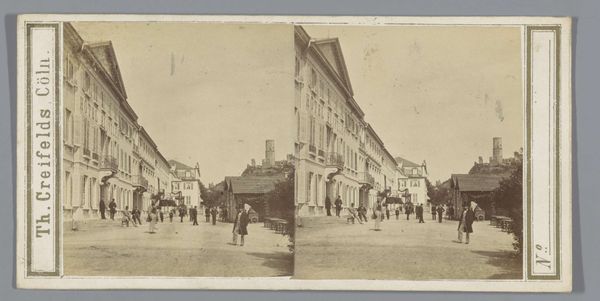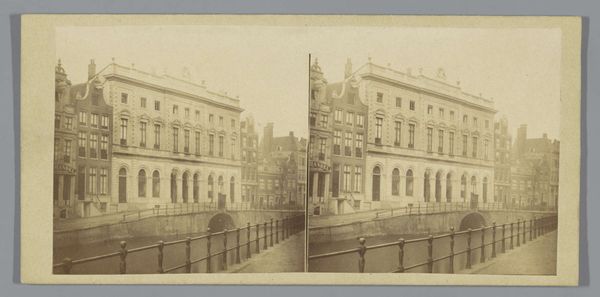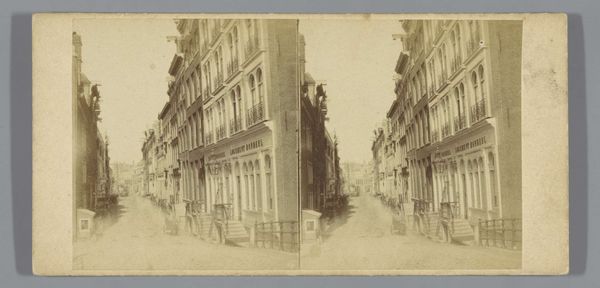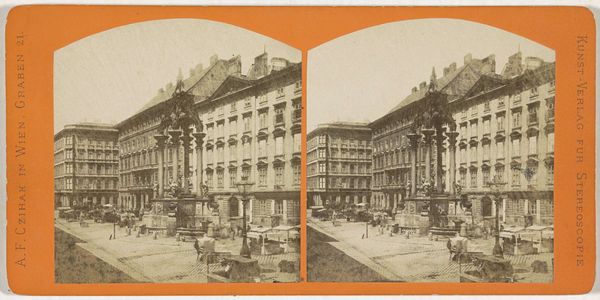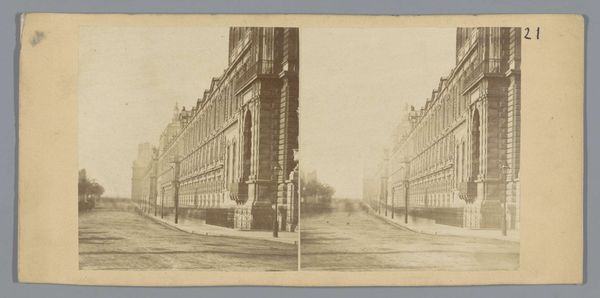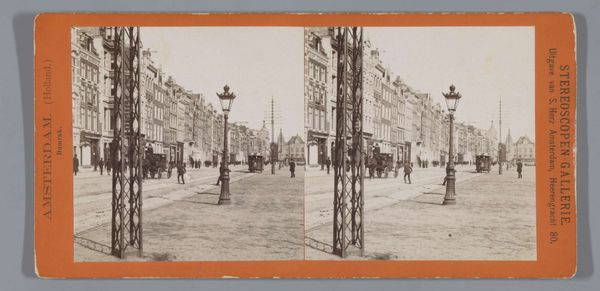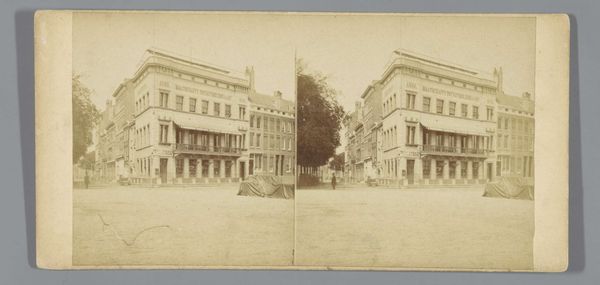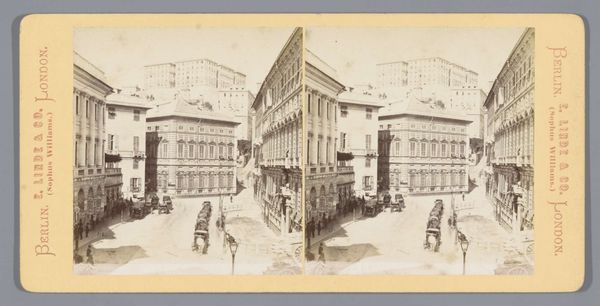
photography, gelatin-silver-print
#
water colours
#
neoclassicism
#
photography
#
coloured pencil
#
gelatin-silver-print
#
cityscape
#
street
#
realism
Dimensions: height 86 mm, width 176 mm
Copyright: Rijks Museum: Open Domain
Curator: Looking at this image, I'm immediately struck by the formality, almost a stillness despite the implied activity of the people within it. Editor: Indeed. This is a gelatin-silver print titled *Schlossplatz met het Berliner Stadtschloss, Berlijn* – or Palace Square with the Berlin City Palace, Berlin, if we translate. It's attributed to Johann Friedrich Stiehm and dates to somewhere between 1868 and 1870. Curator: The image speaks to the 19th century’s fascination with order and control. The wide, paved expanse and the monumental architecture frame individual existence into a neatly-patterned whole. But one wonders, how complicit was Stiehm in romanticizing such an image of power? Editor: Considering Stiehm's context helps. He was documenting Berlin at a time when photography itself was asserting its power as a recorder of reality. This image exists not just as a snapshot, but as a deliberately crafted narrative that elevates the status of both architecture and the empire itself through Neoclassical values of rationality and proportion. The photo, reproduced and circulated by E. Linde & Co., also reflects the booming photography and media industry in late 19th Century Berlin. Curator: But what about the figures occupying the frame? Their subdued attire and passive presence position them almost as props. We might ask: Whose story is being told here, and whose is omitted, and how does that contribute to a visual erasure of social inequities present at that time? Editor: It's crucial to recognize those absences. We must analyze the iconography of state power but not ignore who gets to participate and how that's affected by their class, gender and political background. The clean symmetry subtly enforces a certain vision. Curator: A vision we have a responsibility to deconstruct. By engaging with images like this, not only do we examine an example of state art, we interrogate the cultural dynamics that sustain such symbols of dominance even today. Editor: Precisely. It invites us to contemplate on the social functions of photographs: they reflect but they also manipulate and persuade. It challenges us to confront the ongoing politics of visibility and power encoded in historical images.
Comments
No comments
Be the first to comment and join the conversation on the ultimate creative platform.
